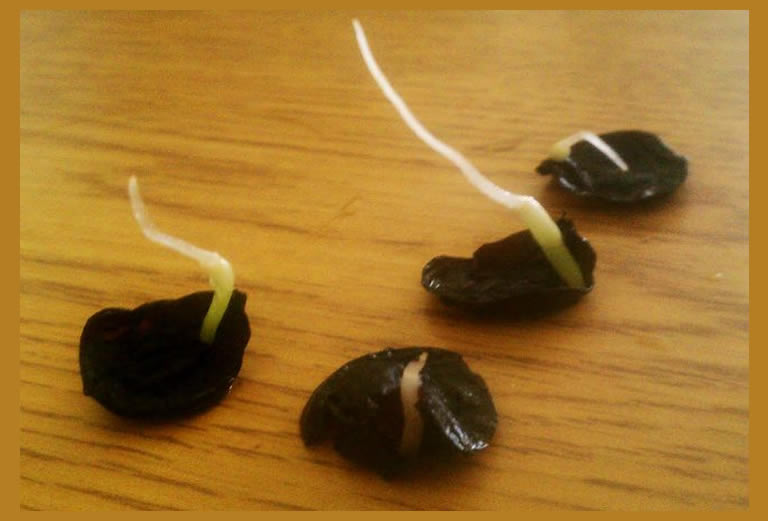In this article I cover everything you need to know about amaryllis seeds and growing amaryllis from seed. It doesn’t matter whether you intend to grow true amaryllis, that is amaryllis belladonna and amaryllis paradisicola, or the more popular hippeastrum varieties, the instructions in this article can be applied to the growing from seed of any amaryllis plant type.
Table of Contents
The complete guide to amaryllis seeds
As most amaryllis plants are bought fully grown or as a bare bulb, many indoor gardeners wonder of they can cultivate this plant from seed.
Amaryllis can grow from seed.
In fact, the easiest way to cultivate this plant is to grow it from seeds.
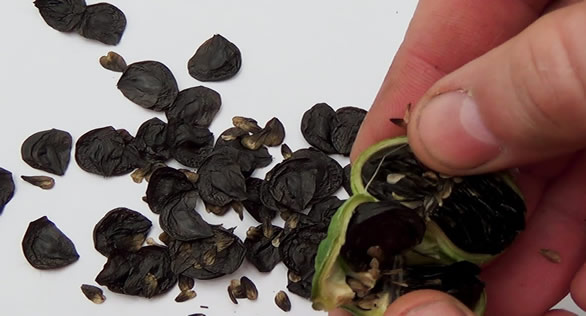
Spent amaryllis flowers produce seeds from the chambered pods that remain on the stalk after blooming has completed.
These seeds can be harvested and used to grow new plants.
Although most indoor amaryllis plants are bought either fully grown or purchased as a bulb, these succulents are fairly easy to cultivate from seed.
You can buy quality seeds online. I’ve had great results using seeds from Amaryllis Man, but if you have a mature amaryllis plant that produces yearly blooms then you will be able to harvest seeds from your own plant.
Later in this article I outline the steps you need to follow to successfully cultivate new amaryllis plants from seed. These include true amaryllis and hippeastrum (more on the differences later).
I will first outline how you can harvest amaryllis seeds from your own plants.
How & when amaryllis produce seeds
Where do amaryllis seeds come from? Can you expect your amaryllis plant to produce seeds so you can cultivate new plants?
Amaryllis produce seeds after they finish blooming.
When amaryllis flower petals wither and die they leave a three-chambered seed pod.
Inside each chamber of the pod are about 50 seeds, each of which is capable of producing a new plant.
As you can see from the image below when an amaryllis flower dies and withers away from its stalk, it leaves a seed pod.
Each seed pod has three chambers and each chamber contains between 50 – 60 seeds.
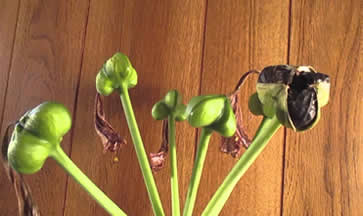
As each chamber of each pod contains dozens of seeds this means each amaryllis flower gives you the opportunity to cultivate many new plants.
How to harvest amaryllis seeds
If you view the image above you will see 5 different seed pods.
Each seed pod contains three chambers and inside each of those chambers are about 50 seeds.
You can see in the image that 4 of the seed pods are green while the last seed pod has broken open to expose a brown interior.
This pod is ready for harvesting.
Before the pod turns brown it will turn a light shade of yellow and when this happens you can break open the pod yourself or simply wait until it opens itself.
Do not open the pods when they are still green as you need to give the seeds time to mature if you want to increase your chances of cultivating healthy new amaryllis plants.
It usually takes between 4 – 6 days for a green pod to ripen and turn brown.
Once you have harvested the seeds you should place them on some kitchen paper and allow them to dry indoors at room temperature for between 5 – 7 days.
How to store amaryllis seeds
If you intend to plant your amaryllis seeds after you have harvested them then you should store them in a dry place for 5 – 7 days before planting them.
Keeping them at room temperature, indoors, is best.
After 5 – 7 days the seeds will have dried out enough for planting.
If you want to keep seeds in longer-term storage then you should place them in a dark area at room temperature.
When I want to store amaryllis seeds (or any other plant seeds for that matter) I will allow the seeds to dry and out before placing them into an airtight container or ziplock bag.
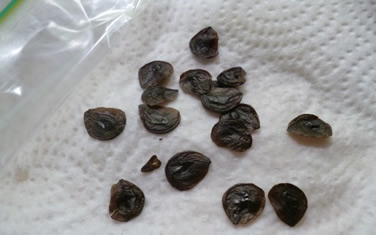
I then place the container in a dark area of my home that is at a consistent root temperature.
Most times I simply keep them in a cabinet drawer. Doing this allows the seeds to last a long time.
If stored correctly amaryllis seeds should stay viable for at least a year.
2 Highly effective methods for growing amaryllis from seed
The first step to growing amaryllis from seed is the germination phase.
Although amaryllis seeds can and will germinate happily in soil, a very popular way to kick-start the germination process is by using water.
The water germination method
By placing amaryllis seeds into a small container of water you can help with the germination process.
All you do is place the seeds into a container of water and wait.
Of course you must ensure the container does not become dry as the water evaporates and so may need to keep topping up the water levels but apart from that you need do nothing special.
It takes about 3 weeks for amaryllis seeds to germinate in water.
Any seeds that fall to the bottom of the container during the process will not germinate and should be disposed of.
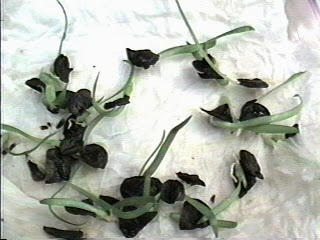
Once the seeds germinate they will produce tiny green stalks at one side and a very thin, almost translucent, root at the other side.
You will need to plant each individual seed into soil separately being very careful not to damage the new roots or stalks.
Because this is much more labor-intensive than merely planting the seeds into soil, and because amaryllis seeds germinate quite well when planted directly into soil, I seldom use the water germination method.
The soil germination method
When they are prepared properly amaryllis seeds have an extremely high germination rate in soil.
The method for planting amaryllis seeds in soil is slightly different to that used for planting amaryllis bulbs, but it is just as easy.
Although using water to germinate amaryllis seeds is quite popular I find it too labor-intensive and not at all necessary.
I do use the water germination process for other plants that do not have such a high success rate germinating in soil but because amaryllis germinate really well in soil there is really no need to use the water germination method.
To grow amaryllis seeds in soil start by preparing a container.
Most times I will use a large basin and simply drill lots of holes in the bottom to create good drainage.
Although you can plant a seed directly into the pot that you intend to be the amaryllis plant’s permanent home I use a large container so I can cultivate many seeds at the same time.
Some will germinate and grow and others will not.
If you use an individual pot for each seed you will find that some grow and some do not.
Much better to keep all the seeds in the same container and then simply repot the ones that grow later.
What soil should you use for growing amaryllis seeds?
Amaryllis soil should be nutrient rich but well draining.
Like all succulents amaryllis does not like to sit in water-soaked soil.
Many potting mix soils work well for amaryllis as does anything that has a 10-10-10 ratio of NPK (nitrogen, phosphorus, potassium).
I personally use Miracle-Gro potting mix for all indoor amaryllis, whether I am growing true amaryllis or hippeastrum, but you can create you own soil mix.
If you want to create your own amaryllis soil mix then you should use compost or topsoil that is mixed with equal parts sand and then add some perlite or vermiculite.
This mixture helps maintain moisture around the seed and provides more than enough nutrients while allowing for good drainage, thus preventing the soil from becoming waterlogged.
Once you have filled the container with soil its time to sow the amaryllis seeds.
Simply sprinkled your dried amaryllis seeds evenly over the soil.
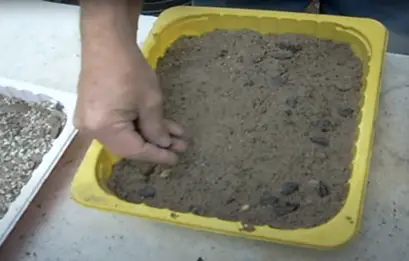
Once you have spread all the seeds over the soil cover them with topsoil or potting mix so they lie about 1/8 of an inch under the soil.
There is no need to bury them deep.
Gently pat down the soil ensuring it is slightly compacted but not hard.
Water the soil so that it is moist.
Do not soak the soil.
You will need to repeat this process every time the soil dries out but try to avoid using too much water – remember that the soil should be moist not waterlogged.
It isn’t unusual to see an amaryllis germination rate of about 80% using this process.
However, with seeds that have been stored for a long period, or ones that have not been allowed to dry, there will be a much lower germination rate.
After about three weeks you should start to see seedlings emerge from the soil.
At this point, and throughout the growing stage of the seedlings, you will need to fertilize the seedlings using a liquid based amaryllis-suitable feed, on a weekly basis.
When a new seedling has reach a height of a few inches (see image below) and looks like a long blade of grass you can replant it into its permanent pot.
Be sure to maintain a proper watering routine at this stage by watering the plant only once every 3 weeks.
Only water the plant more if the soil dries out quicker due to warmer temperatures.
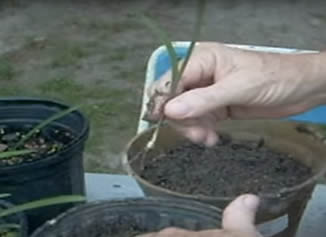
Continue to fertilize the new plant but cut back on the feed once it has been replanted. Aim to fertilize the plant once every 2 weeks.
Once your amaryllis seedlings have developed into fully grown plants you should follow the care guide outlined here.
If you want to know more about amaryllis growth stages and how long it takes the plant to go from seed to bloom read this article.
You may already be aware that amaryllis is a very popular Christmas plant because there are species that match Xmas colors and they can be made to bloom through December and January.
Amaryllis truly does make a great festive plant and if you would like to cultivate your new plants for a Christmas bloom be sure to read our article on doing that here.
Growing amaryllis in water after seeds germinate
Although you can grow amaryllis seeds in soil can you grow them in water?
Amaryllis can grow in water.
You can grow an amaryllis bulb in water as long as the bottom of the bulb does not make direct contact with the water.
You can also grow amaryllis seeds in water before planting them and this is a very effective way to germinate amaryllis seeds.
It is very common to see amaryllis houseplants growing in water all across the US. Although I don’t recommend growing amaryllis in this way, as it reduces the lifespan of the plant, it is possible.
I give detailed instructions for growing amaryllis in water in the amaryllis watering guide.
When using water to germinate amaryllis seeds, as I demonstrated how to do above, you should always remove them once they germinate.
Once removed, plant them in soil as per the instructions above.
Amaryllis origins
Amaryllis are a popular houseplant all across the US but where do they come from originally?
The 2 true species of amaryllis, amaryllis belladonna and amaryllis paradisicola, originally come from South Africa.
The hippeastrum species, which are very popular houseplants, are commonly sold and grown as amaryllis but are not technically amaryllis.
Hippeastrum come from Central and South America.
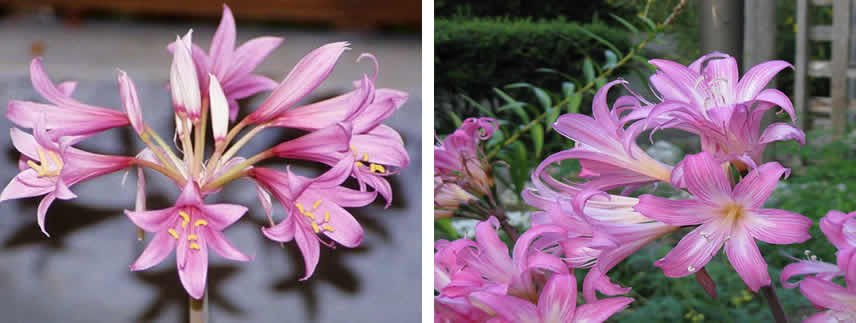
To be exact there are only two species of amaryllis.
The 2 species of amaryllis are:
Amaryllis belladonna – This is native to the south-west Cape Provinces of South Africa.
Amaryllis paradisicola – This is native to the west Cape Provinces of South Africa.
The two true amaryllis species are tropical plants that grow naturally in South Africa but they have been been successfully introduced to many countries which include the tropical climate areas of the USA and parts of Australia.
As a houseplant they are very popular in the US, UK, Australia and New Zealand.
True amaryllis is a tropical plant that requires a warm, humid environment to grow and bloom.
However, many of the different varieties of Amaryllidaceae (almost always hippeastrum) that are sold as amaryllis are actually subtropical plants that, although related to amaryllis, are not amaryllis plants.
True amaryllis are grown indoors in the US, and other countries, but the vast majority of houseplants that are sold and grown as amaryllis are not actually true amaryllis plants at all.
If you have an amaryllis plant, or an amaryllis bulb you want to grow, or amaryllis seeds that you wish to cultivate, then the chances are high that it is one of the 90 species of hippeastrum and not true amaryllis.
So, because plants that are popularly called amaryllis include subtropical non-amaryllis species as well as true tropical amaryllis you can view an amaryllis houseplant as being tropical and subtropical.
You can read more about the origins of this plant in the article what kind of flower is amaryllis.
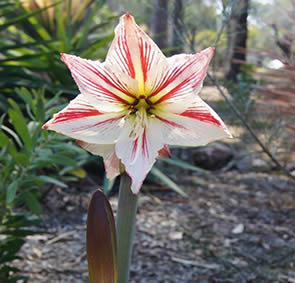
Now that you know there are two different kinds of amaryllis you may be wondering if true amaryllis seeds require different care to hippeastrum seeds because they come from different places.
With one species of amaryllis being tropical and the other being subtropical are there different ways to harvest, prepare and cultivate the seeds of each plant?
Luckily, the answer is no.
Both true true amaryllis and hippeastrum “amaryllis” belong to the same family – Amaryllidaceae.
Amaryllis and hippeastrum, like all 1600 other varieties of Amaryllidaceae, require the same care and produce seeds in the same manner.
This means the cultivation of the seeds are also identical.
Both true amaryllis and hippeastrum “amaryllis” produce seeds that can be harvested and both plant types can be grown from seed in the same way.
There is a difference in how you should cultivate amaryllis seeds when planting them indoors or outdoors however, regardless of which type of amaryllis you are growing.
Any species of amaryllis can only be grown outdoors year-round in USDA climate zones 9 through 11.
Some US gardens will grow amaryllis outdoors in the yard or in pots in USDA climate zone 8.
Be aware though that in zone 8 even mature plants will need to be provided with adequate winter protection, as I showed how to do here because frost will kill both tropical and subtropical amaryllis.
If growing amaryllis outdoors from seed you should aim to plant the seeds in Feb – March. You want the plant to start growing in the spring – making sure of course that you are only growing them outside if you live in the correct climate zone.
For more information on growing amaryllis outdoors, or moving an indoor potted amaryllis outside, read this article.
Please be aware that both indoor potted amaryllis and outdoor yard amaryllis can be dangerous for small children and pets as amaryllis is poisonous when eaten.
Be sure to read the article are amaryllis poisonous so you know how to protect curious kids, pets and wild animals.
For more information on the care needs of amaryllis read this article.

